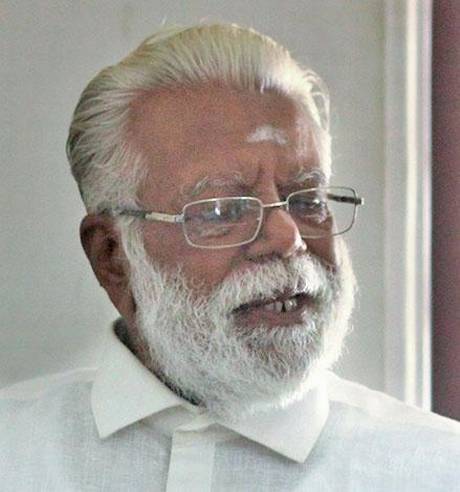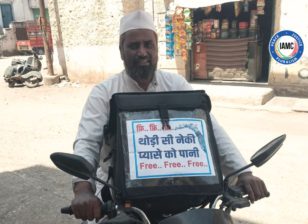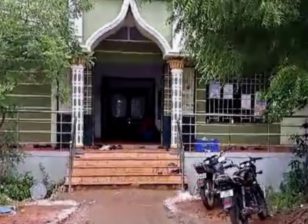This Hindu builds mosques
Govindan Gopalakrishnan, a self-taught architect, has constructed 110 mosques, 4 churches and a temple
A person gazing at the skyline from any major town in South Kerala is bound to come across one of the minarets or a dome designed by Govindan Gopalakrishnan.
From the imposing Beemapally mosque in coastal Thiruvananthapuram to the Taj Mahal-inspired Sheikh Masjid in Karunagappally, the 85-year-old, self-taught architect in whose world religious barriers do not exist, has constructed more mosques than any other type of building. Over close to six decades, he has constructed 110 mosques, 4 churches, a temple and several houses, earning himself the name ‘mosque man.’
Religious texts
On his table sits close together copies of Bhagwad Gita, Quran, Bible and other religious texts, almost as a reflection of his architectural journey.
His brush with architecture began quite early as a school-going child in the 1940s, tracing out the blueprints of buildings left behind by his father K.Govindan, a contractor, in tracing papers he made out of rubbing coconut oil on white sheets.
“On the weekends, I used to visit my father’s work sites to see how those lines appeared in the original structure. I learned the basics of building drawing from L.A.Saldanha, an Anglo-Indian draftsman who used to work with him. But, I couldn’t take up engineering or architecture studies as he wished. Though I joined the AMIE course later, I couldn’t complete that either. During that time, I worked as an unpaid apprentice with the Public Works Department’s building division, working in the SAT Hospital building project, which helped me learn the craft and techniques,” says Gopalakrishnan.
The journey towards being the ‘mosque man’ began from Palayam in Thiruvananthapuram, a junction representative of the communal harmony of the State, with a mosque, temple and a church situated next to each other.
When the Palayam Mosque committee decided to rebuild the mosque in the early 1960s, his father won the construction contract. He assisted his father in working on the design by T.P.Kuttiamu, Kerala’s first chief engineer.
“During those days, the contractor did not get an advance amount and we had to spend from our pockets during the construction period. But, we couldn’t afford the same. I sought the help of P.P.Chummar, for whom I was constructing a house. He readily agreed. Thus, the Palayam mosque construction by Hindu architects began with the financial aid of a Christian. I learned my lessons in communal amity during that time. The then Indian President Zakir Hussain inaugurated the mosque in 1967,” reminisces Gopalakrishnan.
Till that time, most of the mosques in the region were built in the Kerala architectural style with tiled roofs. The design of the Palayam Mosque, with a dome and minarets, inspired from the Safdarjung Tomb in Delhi, led to demand from other mosque committees too. In 1967, the Beemapally mosque committee approached him to be the designer for its reconstruction.
“I was just 31 then and quite thrilled. We didn’t have electricity at home then. I completed the drawing in one week, working on it day and night, under a lantern, after learning the basics of Indo-Saracenic architecture from Percy Brown’s Indian Architecture (Islamic Period). The construction took a long 17 years, as it all depended on donations,” he says.
Lotus shape
Though the lotus shape he used as a motif did create minor controversies, the pink pastel coloured-structure with a massive facade and huge domes, is still appreciated. Another of the major mosque reconstruction work he took up was of the Vavar Mosque at Erumely, where pilgrims to the Sabarimala Ayyappa Temple stop by to pay their respects. He came up with design tweaks, including a roofed verandah for the Hindu pilgrims to circle the mosque without disturbing the Namaz.
His wish to construct a church was granted when he was hired to design the St.George Orthodox Church at Chandanapally in Pathanamthitta district, for which he borrowed inspiration from the St.Peter’s Basilica in Vatican. Near his home in Lenin Nagar in the capital is the chariot-shaped Alumkandam Bhadrakali temple, designed by him. Some of the mosques he has designed are in Tirunelveli, Dindigul and in the Malabar region.
Communal harmony reigns supreme inside his home too, with him being married to N.Jaya, a Christian, and two of his three children married to those from other religions or castes. In 2002, he had started ‘Manava Maithri,’ a social organisation to promote tolerance and fraternal relationships between various communities. Currently, he has completed the first part of his book ‘Njan Kanda Quran’ (The Quran I Saw), based on his understanding of the Quran over the years.
‘Needless fights’
“When I first suggested that some of the Arabic calligraphies in front of mosques should be written in Malayalam too, there was some opposition. Later, I managed to do it at the Sheikh Masjid. I thought more people should know about the beautiful teachings. My effort is towards reducing the distance between communities, and eliminating misunderstandings. There is much needless fight over religion,” says Gopalakrishnan.
This post first appeared on The Hindu




